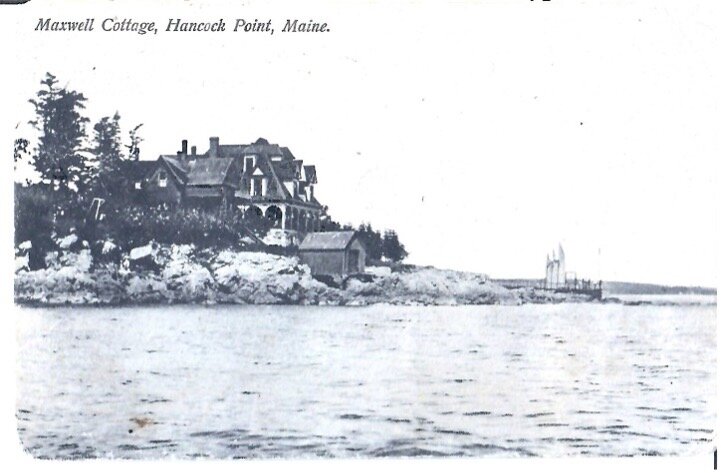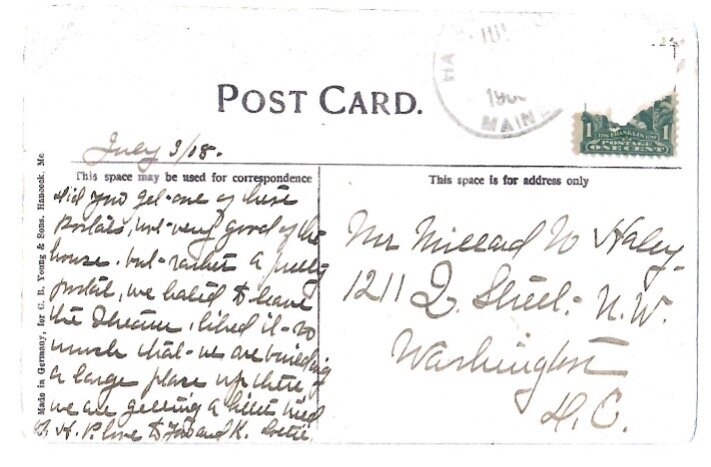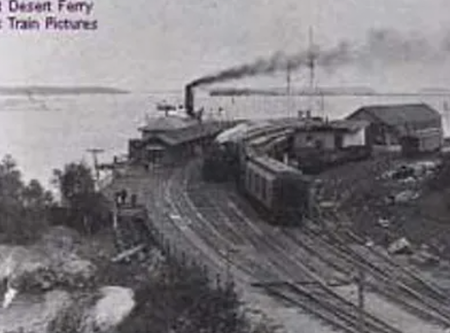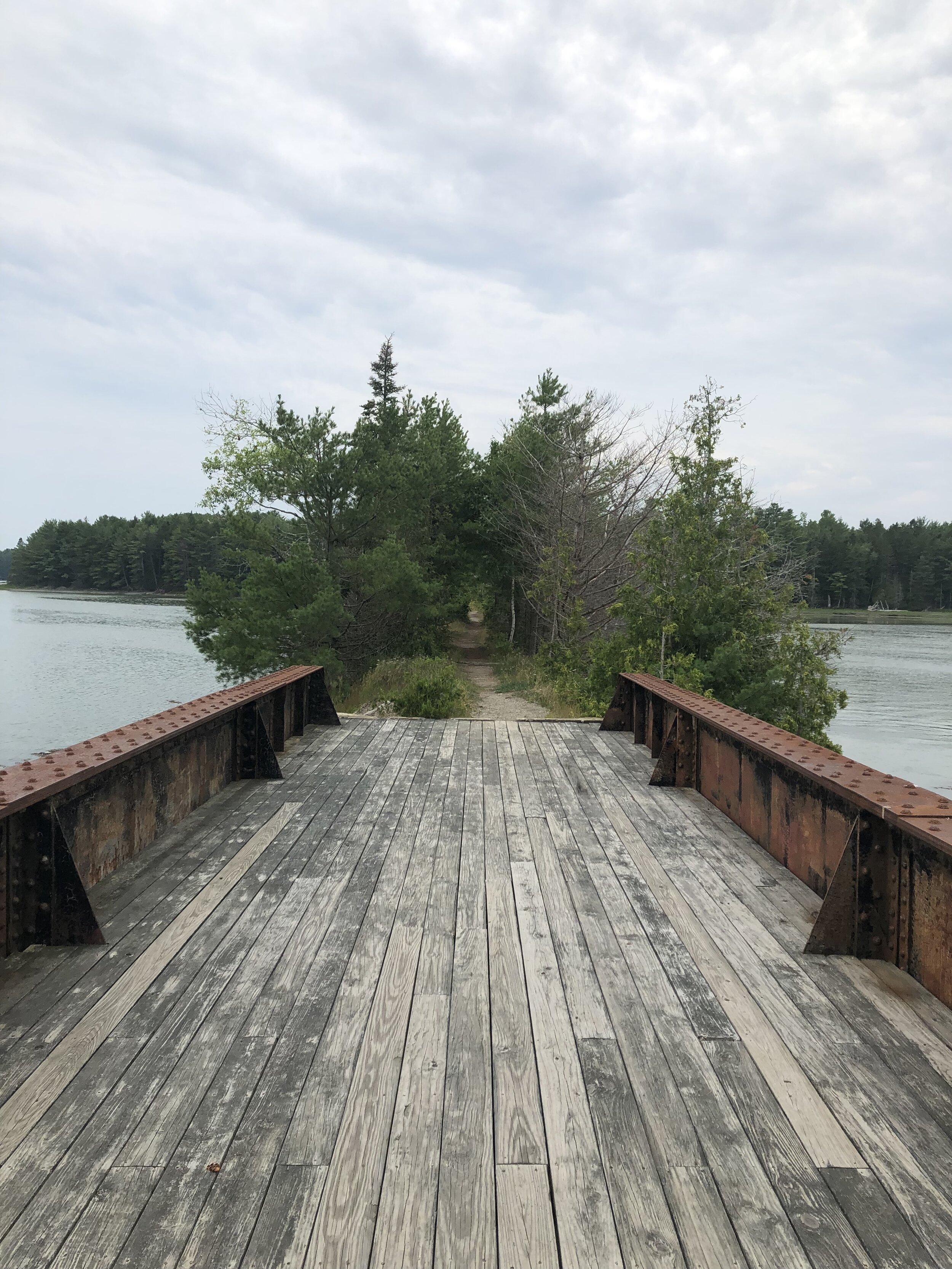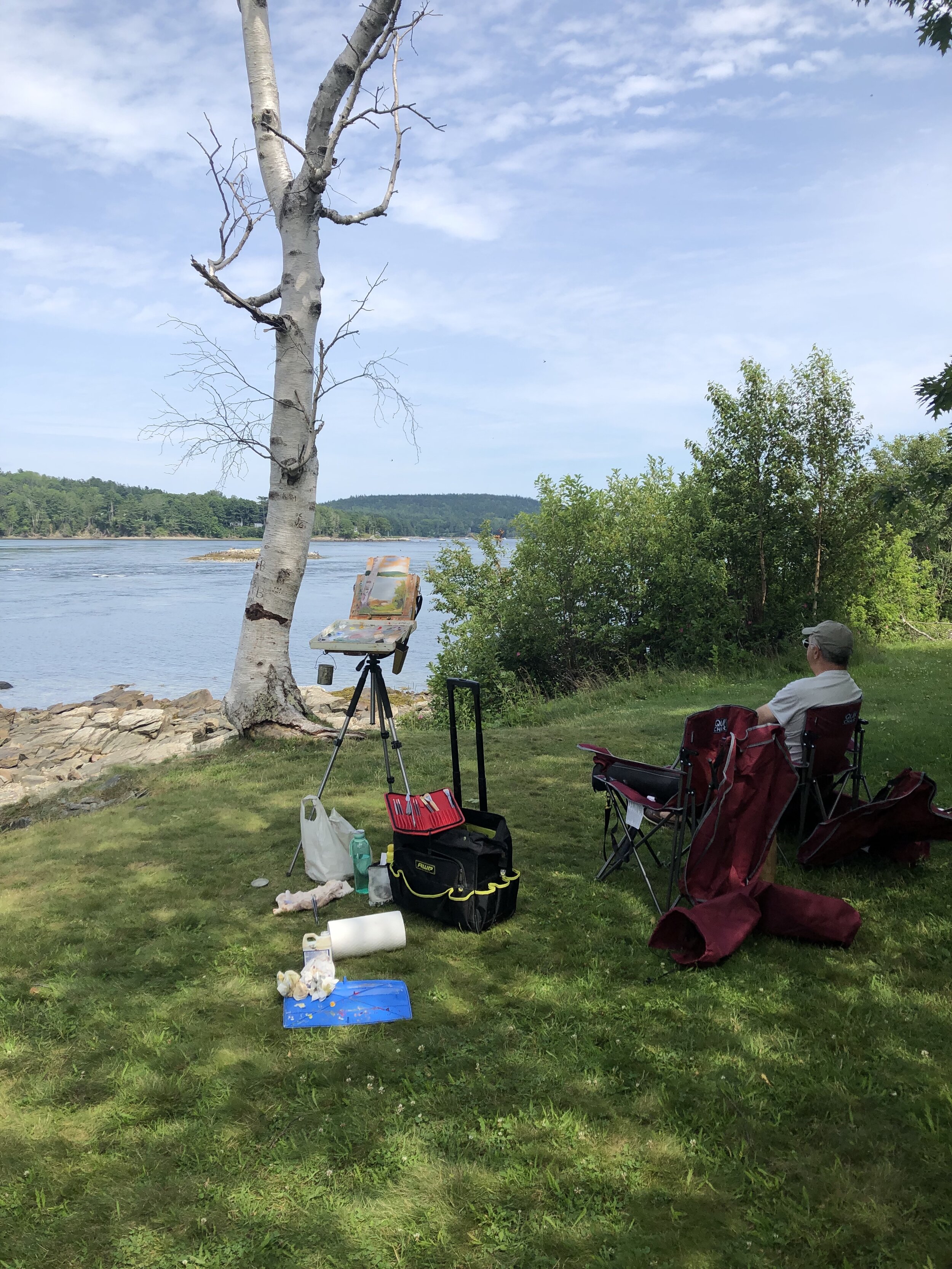The Way Back, Part II: Time Travel
Have you ever wanted to go back in time, visit your ancestors, live how they lived, see the landscape they walked in? Thanks to the photographs and letters I found after my parents died, I am on such a journey, tracing my heritage in Maine.
The postcard my mother showed me many years ago was my first clue. It was written by my great Aunt Lottie to her brother, my grandfather, Millard Upton Haley on July 3, 1918.
We weren’t sure what we’d find returning to Hancock Point after 15 years, but I was determined to learn more about the Maxwells. The drive up from Mt. Desert took less than 45 minutes and it was a beautiful day. We had booked the Crocker House Country Inn for four nights and were not disappointed. The rooms were charming, including ours. The restaurant, where we ate three nights, was excellent, with great food and service. We arrived on a Friday night and there was live jazz and cocktails on the lawn, all good signs that we were about to discover something very exciting and we did.
Our cozy room at the Crocker House.
On the day we set aside for research, we made our first stop at the Hancock Point Library, which was very conveniently located next door to Crocker House. The distinctive octagonal building was built in 1887 as a private house by Isaac Johnson. In 1914 it was donated to the Hancock Point Library Association by his daughter Lettie. A lovely resident of HP was volunteering on the day of our visit. She did not remember the Maxwell cottage but steered us to a two-volume history of HP, The Sun Never Sets on Hancock Point by Sanford Phippen, who had been the librarian for many years. In the introduction he writes:
“Because of its physical locale, of course, the Town of Hancock has always been relatively more worldly than many of the surrounding inland towns of comparable size. Any town situated on the sea cannot be termed provincial. Long before Hancock Point became a summer colony, there were Hancock men going to sea, fishing the Grand Banks, traveling about the world; and from 1884 to 1930, Hancock’s Mount Desert Ferry terminal for the Bar Harbor Express train was used by thousands of people, including many famous and wealthy folk, coming and going. So too were the Bangor and Ellsworth founders of Hancock Point a “largely educated and sophisticated group of means.”
The Hancock Point Library.
The railway was originally built by Maine Central Railroad in the 1880s and carried visitors from as far as Philadelphia to Hancock, where they boarded ferries to reach the famous Gilded Age summer resorts on Mount Desert Island. I like to imagine the Maxwells and their friends took the train. Photo from Downeast Scenic Railroad.
Into this setting came the wealthy Maxwells of Saugerties, NY, a prominent and very wealthy family. James T. Maxwell was 39 when he married my great aunt Charlotte Alice Haley in 1893, 17 years his junior. The Maxwells had interests in the cut-stone business as well as politics. In The History of Ulster County, by A.T. Clearwater, James. T. Maxwell’s cut-stone plant in Philadelphia was “one of the most important plants of its kind in the country.” In addition to the bluestone cutting companies, James Maxwell had ownership in a number of steamboat companies. Steamboats traveled up and down the coast, connecting Maine to Massachusetts (according to the Maine Historical Society).
But how did Charlotte, born in Princeton, Maine, meet and marry an older, wealthier man from New York? How did they come to summer on Hancock Point in the first place? The volunteer from the library had another suggestion: The Hancock Point Historical Society. Bill and I got in the car and continued on our search.
The Society building was brand new on the outside but had literally centuries of history waiting inside. I explained to a staff person why I was there and asked if they could help. She led me (metaphorically) by the hand and opened a golden door to the past: archives compiled by the late Lois Crabtree Johnson, the museum’s namesake, whose ancestors helped found Hancock. Here, under M, was an entire file on the Maxwells.
I found approximately 300 excerpts from The Ellsworth American, dating from 1890 to 1922. Someone, maybe Lois Johnson, had painstakingly copied each and every mention of Mr. and Mrs. James T. Maxwell for the archives. This is what I discovered.
One of the mysteries that was solved was how my great aunt Charlotte (Lottie) and James T. Maxwell met. Maxwell had achieved wealth from the stone cutting business but I learned from the file that he was enamored with ships and ship building, which is how he came to Franklin. In the 1880s, the town, sitting on the banks of the Jordan River, was one of the largest ship building centers in Maine. Maxwell was already buying ships and having them built long before he met Lottie, sometime between 1890, when she first came to Franklin with her brother (my great uncle) Robert, and 1893, when Lottie’s marriage to Maxwell was reported in The Ellsworth American on Thursday, October 26, 1893. “[The event took place] at the residence of William J. Haley, Princeton Maine, on Oct. 18, home wedding, of Miss Charlotte Alice Haley and James Thomas Maxwell of Saugerties, NY.”
Another was when and how Maxwell Cottage was built. According to The Ellsworth American, Charlotte and her husband were frequent visitors to Hancock Point, most likely because of business dealings, as well as being friends with Capt. Fred Crabtree of HP who built a famous three-masted schooner named the “John Maxwell.” In 1900, the Maxwells purchased land from her friends the Wests and built their own cottage. The builder was her brother, Robert Haley, who moved to HP with his family to supervise construction which lasted a year.
And even if I never saw the cottage, thanks to the archives, I had a lovely walk through “Watersmeet,” and had a chance to enjoy a lovely reception and meet some of the important guests.
The Ellsworth American, Wednesday, July 3, 1901:
Through the courtesy of Mrs. James Maxwell, your correspondent recently had the pleasure of examining her cottage, which is nearing completion. The interior finish gives evidence of the skillful design and workmanship. The most notable features are the parlor and staircases, finished by R. C. Smith, one of Hancock’s most skilled mechanics. It is situated on the extreme point, and commands a full view of Bar Harbor, Sorrento and Grindstone Neck. The cottage is finished in hardwood throughout and has all modern improvements. It is furnished in antique furniture, among which are many heirlooms.
The Ellsworth American, August 21, 1901:
Mrs. J.T. Maxwell held a reception at her beautiful new cottage, Watersmeet. The house was profusely decorated with flowers of the season and presented a charming sight. Music was furnished by Monaghan’s orchestra of Ellsworth. Mrs. Maxwell was assisted in receiving by her mother, Mrs. Haley, her sisters (and others). During the evening, Mable Monaghan favored the company with ballads. Dainty refreshments were served. Among the notable guests were William De Witt Hyde, the president of Bowdoin College and Judge Lucilius A. Emery, Justice of the Maine Supreme Court.
William De Witt Hyde.
Judge Lucilius A. Emery.
Our correspondent for the Ellsworth American goes on to do a splendid reporting job on the activities of the Maxwells, including the birth of their sons, arrival for the summer with maids in tow, lunch outings, boat launchings, tennis, and the purchase of a Stevens-Duryea automobile, which was driven by their chauffeur. The cost at the time was $5,000. Translated to today: about $150,000.
Photo from Vintage Motoring Blog.
The dutiful reporting, as far as the file folder documents, ends with an appropriate final posting dated Sept. 12, 1911, a couple years before Charlotte sent the postcard. “The Maxwell cottage was closed Tuesday for the season. Mrs. Maxwell and sons William and James left Sunday.”
I’m hoping a trip to Saugerties will yield my long sought-after photo of Charlotte as Mrs. Maxwell. The only one I have is this one, taken with her father and sisters but I don’t know which one is Charlotte.
My great grandfather, William James Haley and his three daughters, Greta, Charlotte and Olive. Which one is Charlotte?
On Hancock Point, reading about Lottie and her family, envisioning where the cottage stood, walking past the library and tennis courts where they undoubtedly went, I narrowed the separation of more than a century, bringing me closer to knowing my family and who I am.
Scenes from our trip: the landscapes are from our hike on Old Pond Trail, and I had a good painting day overlooking the Tidal Falls Preserve.


